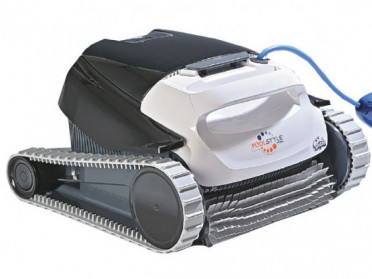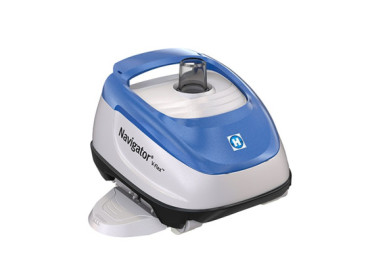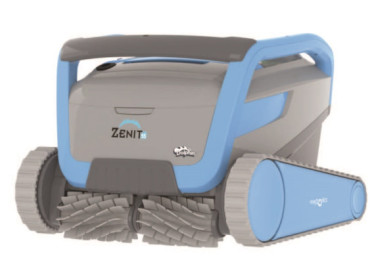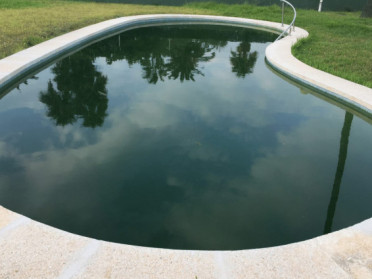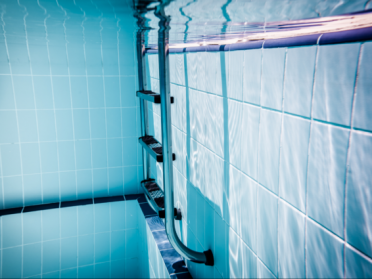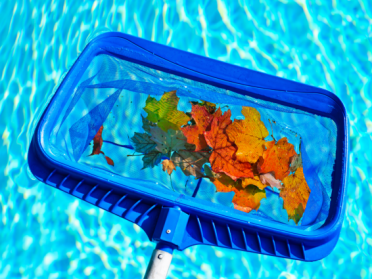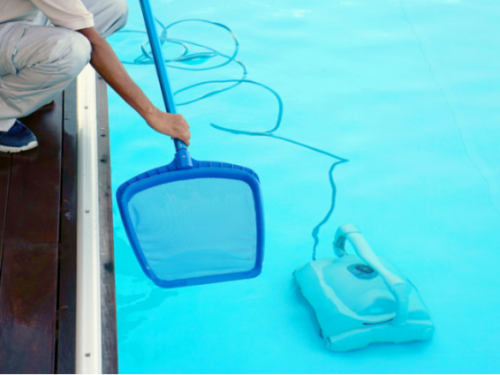
Tips and Tricks to Vacuuming Your Swimming Pool
Category : Maintenance
As a swimming pool owner, you know there’s a lot that goes into pool maintenance. But simple routine vacuuming makes it easy to keep ahead of the dirt and debris that can lead to algae build-up in your pool water.
The key word here is routine.
You should be vacuuming your inground or above-ground pool weekly – even if you have a robotic pool cleaner. By incorporating vacuuming into your weekly pool cleaning regimen, you’ll find that it soon becomes part of your standard practice. A pool vacuum quickly removes debris to keep your pool water clean and prevent bigger maintenance headaches.
The Right Pool Vacuuming Equipment
You’ll be using your pool vacuum often: once a week as part of your regular routine, plus any time your pool has collected a bunch of debris. So make sure you have all the right equipment to keep up with your vacuuming.
Pro tip: If your pool has a vinyl pool liner, your vacuum head should be designed with a soft brush to avoid tears and damage. If your pool is concrete or granite, a vacuum head with wheels will promote smooth movement along the pool floor.
Your pool vacuum system requires several elements:
- Vacuum head: This is the piece that suctions up all the debris. There are different sizes and materials, so be sure your choice is best for the shape and make-up of your pool.
- Interchangeable attachments: A telescopic pole connects to your vacuum to better reach into your pool's deep ends and hard-to-reach places. Nets, skimmers, and brushes are good options that you can attach to the telescopic pole to cover a variety of pool debris.
- Vacuum hose: The hose connects the vacuum head to the pool pump through the skimmer inlet, which provides debris-sucking power.
- Vacuum plate: This connects the vacuum hose to the skimmer inlet. Sometimes it’s also referred to as the skimmer plate.
A Robotic Cleaner Is No Substitute: Your robotic pool cleaner is meant for light duty, but asking it to handle more heavy cleaning isn’t fair – and could actually damage the machine. Your robotic cleaner isn’t designed to clear away concentrations of leaves and other organic matter that affect your pool water quality. Besides, all that debris turns your swimming pool water into a breeding ground for algae.
Keep in mind that vacuuming isn’t always successful in removing algae from your inground or above-ground swimming pool. Once it takes root in the crevices of your pool, it can take more than vacuuming to clear it up. You might need it scrubbed with a special cleaner and a shock treatment to take care of the algae. But once you’ve cleared it up, routine pool vacuuming will help prevent those hard-to-tackle blooms in the future.
The Right Set-Up for Your Pool Vacuum
It’s easy to keep your pool water healthy and clean with a weekly vacuuming. If you don’t want to opt for weekly pool service, here’s a checklist of steps to take to vacuum your pool yourself.
1. Assemble the Vacuum
The vacuum head quickly snaps onto the telescopic pole. Attach one end of the vacuum hose to the vacuum head. Remove the skimmer basket, then attach the other end of the hose to the skimmer using the vacuum plate.
Pro tip: Before connecting the vacuum hose to the skimmer, clear out all the air by holding the hose up against a pool jets until you no longer see air bubbles coming out of the hose.
2. Select the Filter Valve Setting
Determine the level of intensity your vacuum needs for effective cleaning. If you’re keeping up with a routine vacuuming schedule, leave your multiport valve filter on its “Filter” setting to see light cleaning.
If you’re seeing large amounts of debris, say after a big storm, set your filter system to “Waste.” Because of the higher intensity of cleaning, the “Waste” setting flushes the water and accumulated debris down the drain, instead of passing it through the filter.
Pro tip: If you see a drop in your pool water level when the pool filter is turned to the “Waste” setting, use a garden hose to ensure a steady stream of fresh water and keep your pool properly filled at the right level.
3. Vacuum Away!
Now that your vacuum is set up, you’re ready to start cleaning. And it’s just like vacuuming your carpets: Move the vacuum head in slow, deliberate linear passes. For particularly dirty pool water, expect to pause occasionally and empty the pump strainer before continuing your vacuuming to prevent clogs as you remove debris from the floor of your pool. For a finishing touch, attach a brush to your telescoping pole and give the pool floor and sides a good scrubbing.
Pro tip: Don’t move your pool vacuum too quickly. Going too fast will just swirl the debris without sucking it up.
4. Clean Up After Yourself
Don’t leave your vacuum in the pool. The prolonged exposure can damage the equipment – if your swimmers don’t end up stepping on it first. After each vacuum session, disconnect the vacuum head and vacuum hoses and store them properly.
If you changed your filter pump setting to “Waste,” be sure to remember to reset it back to “Filter” to prevent overtaxing your filter system during normal pool use.
Pro tip: Don’t neglect the bottom of the skimmer when cleaning your pool vacuum. Make sure you check it and clear out any amassed debris. Otherwise you’ll notice decreased suction, which can be frustrating and might actually damage the equipment over time.
5. Test, Test, Test
Your water balance is an important consideration in keeping your swimming pool clean. Be sure to test your water’s pH after every time you vacuum your pool because the act of vacuuming can kick up debris and affect the levels.

